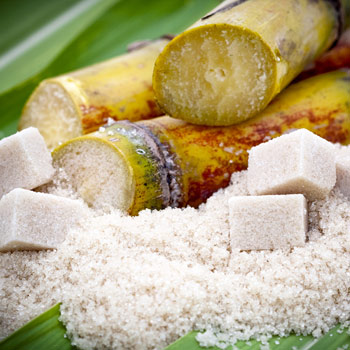
What should I know before investing in sugar?
Firstly we shall take a few moments to examine sugar and its market in a little more detail. In fact, sugar is one of the food commodities that is the most highly traded on the stock markets worldwide and its market represents nearly 52 billion dollars at present.
Sugar as a food is actually produced in two different ways, from sugar cane or sugar beet. Regarding the demand for sugar, it is also important to know that sugar is in fact far more used in industry than simply as a sweetener for other foods. Sugar is also used in beauty products for example and as an alternative energy to fossil fuels such as oil.
It is exactly this significant polyvalence of sugar that makes it such a highly appreciated asset for investors and also explains the high liquidity of this market. In fact, the sugar market is a large market and so the volatility is also very high.
Of course, this volatility also calls for prudence as it could be said to be synonymous with risk.
It can also be beneficial to be aware of sugar production around the world. In fact, this is produced mainly in certain particular countries and now we shall briefly summarise these high sugar producing countries as well as the comparative amounts they produce:
- Brazil is clearly the current leader in sugar production worldwide producing an average of 39 million tons per year.
- We then find India with 24.8 million tons per year.
- The European Union lies in third position and produces an average of 15.5 million tons of sugar per year.
- In fourth position we find China with 10 million tons.
- Finally, Thailand is in fifth position with 9.26 million tons of sugar produced per year.
It should be noted that sugar, like other agricultural or food commodities, is quoted on the American NYMEX stock market. Its quotation is therefore in American dollars.
Invest in sugar (CFD)!{etoroCFDrisk}% of retail CFD accounts lose money - etoro.com
On which markets is the price of sugar quoted?
Sugar is mainly quoted on two stock exchanges:
1. ICE Futures US (formerly NYBOT)
- The most important market for raw sugar.
- Futures contracts are denominated in cents per pound (lb).
- Contracts expire monthly and run for 12 months.
- The market code for raw sugar is SB.
2. Intercontinental Exchange (ICE) Europe
- The most important market for white sugar.
- Futures contracts are denominated in dollars per metric tonne (t).
- Contracts expire monthly and run for 12 months.
- The market code for white sugar is SF.
Other markets
- Sugar is also listed on other exchanges, such as Liffe (London) and SGX (Singapore).
- Trading volumes on these markets are generally lower than on ICE Futures US and ICE Europe.
How to invest in sugar?
Sugar is an important commodity that is used in many food and beverage products. As an investment, sugar can offer portfolio diversification, as well as attractive return potential. There are several ways to invest in sugar, each with its own advantages and disadvantages, and the choice of one or other of these methods will depend primarily on your level of risk aversion.
Firstly, investors can invest in sugar futures. Futures contracts are agreements to buy or sell a specified quantity of sugar at a pre-agreed price at a future date. Sugar futures are traded on commodity exchanges such as the NYMEX and ICE. Futures contracts can offer potentially high returns, but they also carry a high risk due to price volatility.
Invest in sugar with ETFs
Another option is to invest in sugar trackers or ETFs. These funds allow investors to invest in sugar without having to trade directly in the commodity markets. Trackers and ETFs invest in sugar futures or in companies involved in the sugar industry. They can offer diversified exposure to sugar, which can be an advantage for investors seeking to minimise risk.
Investors can also invest in shares of companies involved in the production or distribution of sugar. Shares in sugar companies are traded on stock markets and can offer potentially higher returns than trackers or ETFs. However, individual shares are riskier than diversified funds, as they can be affected by company-specific factors.
Trading sugar with CFDs
Finally, investors can invest in sugar CFDs. CFDs are financial instruments that allow investors to speculate on sugar price movements without having to physically buy or sell sugar. Sugar CFDs are traded on online trading platforms and offer great flexibility, as investors can take up or down positions. However, CFDs also carry high risks due to the leverage that can magnify gains, but also losses.
Invest in sugar (CFD)!{etoroCFDrisk}% of retail CFD accounts lose money - etoro.com
How to achieve a good technical analysis of the sugar price?
Before investing in sugar, the first analysis that we shall examine here is the technical analysis of the sugar price. This in fact consists of studying the stock market charts of this asset in order to identify the significant rising and falling movements.
For this we use several different types of technical indicators such as the moving averages, the MACD indicator, the pivot points, and the support and resistance technical indicators as well as the Bollinger Bands.
These indicators can be displayed directly on the charts available from online brokers but of course rely on your correct interpretation of the data which requires a certain prior knowledge. Their objective is to provide an indication as to the direction of the trend as well as its strength, the volatility of the market and also the major psychological thresholds which can lead to a reversal or acceleration in the trend.
Historical trends in the price of sugar
The historical trend in the price of sugar has been marked by numerous fluctuations. Here are a few key points:
19th century:
- Sugar was a rare and expensive commodity, mainly produced by the European colonies.
- The abolition of slavery and the expansion of sugar beet production helped to drive down the price of sugar.
20th century:
- Sugar prices remained relatively stable for most of the century.
- Two oil crises in the 1970s led to a rise in the price of sugar, as oil is an important input in the production of fertilisers and pesticides.
- In the 1980s, surplus production caused the price of sugar to fall to an all-time low.
21st century:
- The price of sugar rose sharply in the early 2000s, due to a combination of factors such as drought, growing global demand and speculation.
- The global financial crisis in 2008 led to a fall in the price of sugar, but it then rebounded.
- Since 2011, the price of sugar has been relatively stable, with a slight downward trend.
Here is a table showing recent trends in the price of sugar on the New York ICE exchange:
| Year |
Average price (cents per pound) |
Change on previous year |
| 2014 |
18.5 |
-2.6% |
| 2015 |
15.0 |
-19.0% |
| 2016 |
17.0 |
+13.3% |
| 2017 |
20.0 |
+17.6% |
| 2018 |
18.0 |
-10.0% |
| 2019 |
13.5 |
-25.0% |
| 2020 |
14.0 |
+3.7% |
| 2021 |
16.0 |
+14.3% |
| 2022 |
17.5 |
+9.4% |
| 2023 |
18.0 |
+2.9% |


